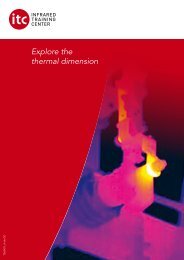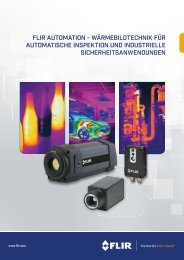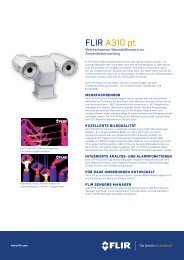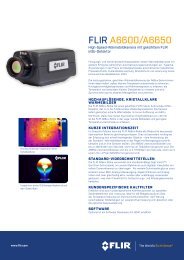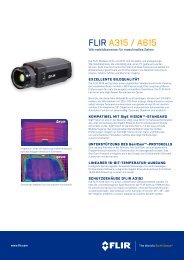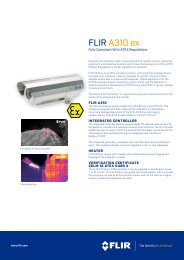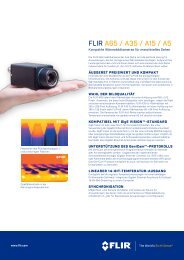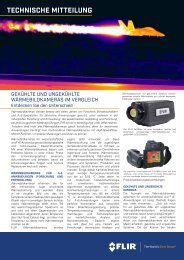Booklet Forschung und Entwicklung EN
You also want an ePaper? Increase the reach of your titles
YUMPU automatically turns print PDFs into web optimized ePapers that Google loves.
IR Detectors For Thermographic Imaging<br />
Figure 6. Integrated Stirling cooler, working with<br />
helium gas, cooling down to –196ºC or sometimes<br />
even lower temperatures<br />
Figure 7. Examples of cooled focal plane array<br />
assemblies used in IR cameras<br />
In reality, assemblies are a bit more<br />
complex. Depending on the detector<br />
material and its operating principle,<br />
an optical grating may be part of the<br />
FPA assembly. This is the case for QWIP<br />
detectors, in which the optical grating<br />
disperses incident radiation to take<br />
advantage of directional sensitivity in the<br />
detector material’s crystal lattice. This has<br />
the effect of increasing overall sensitivity<br />
of a QWIP detector. Furthermore, the FPA<br />
must be bonded to the IR camera readout<br />
Figure 8. QWIP FPA mounted on a ceramics<br />
substrate and bonded to external electronics<br />
electronics. A finished QWIP detector and<br />
IC electronics assembly is shown in Figure<br />
8. This would be incorporated with a Dewar<br />
or Stirling cooler in an assembly similar to<br />
those shown in Figure 7.<br />
Another complexity is the fact that each<br />
individual detector in the FPA has a slightly<br />
different gain and zero offset. To create a<br />
useful thermographic image, the different<br />
gains and offsets must be corrected<br />
to a normalized value. This multi-step<br />
calibration process is performed by the<br />
camera software. See Figures 9–11.<br />
The ultimate result is a thermographic<br />
image that accurately portrays relative<br />
temperatures across the target object<br />
or scene (Figure 12). Moreover, actual<br />
temperatures can be calculated to within<br />
approximately ±1°C accuracy.<br />
11





